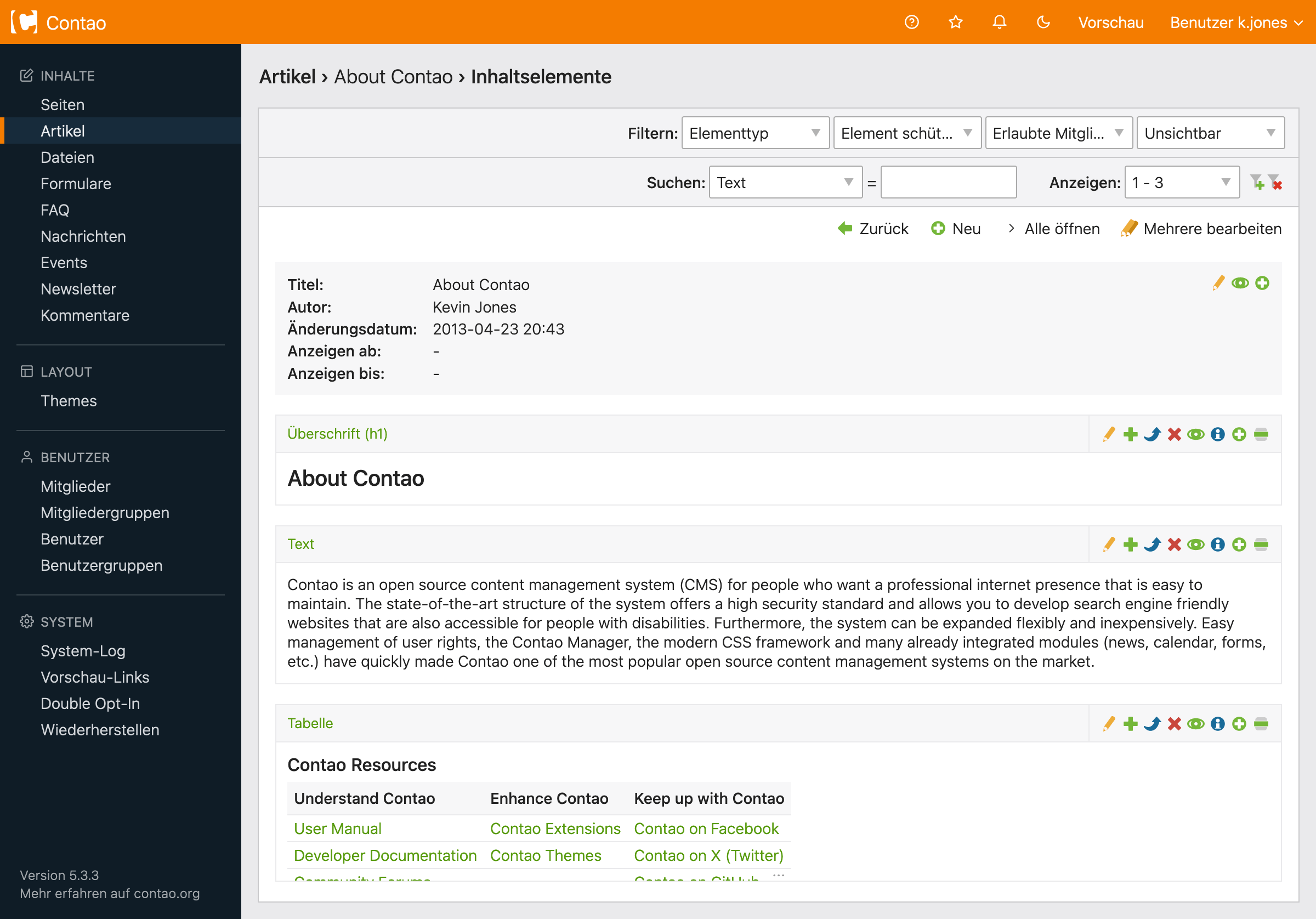Setup a development environment for Contao on Arch Linux
by manu

I started to use Contao again. After a five year hiatus I can clearly say, it is my favorite CMS nowadays. It still looks and feels the same after all those years, I really appreciate using it. Pages, articles, modules, content elements. Once you got to know about them you don’t want to miss them anymore. The backend is probably the best part about it. The only thing I need is an environment to develop sites locally.
Packages to install:
sudo pacman -S php php-gd php-imagick php-sodium php-fpm composer
Edit the file /etc/php/php-fpm.d/www.conf:
user = manugroup = manulisten.owner = manulisten.group = manu
Next, we have to install the Symfony CLI. I just downloaded one of the binaries with wget, extracted the archive and moved it to a location which is in my $PATH. Following this guide, I enabled TLS and started the proxy with symfony server:ca:install and symfony proxy:start. For every project’s root, I attached a domain first once with symfony proxy:domain:attach foo and as soon as I want to start working on the project, I start the server with symfony server:start. After installing Contao, make sure to set the entry point to use the https protocol. To get a list of projects and attached domain names, I usually run symfony proxy:status.
Now the only thing left to do is to tell our web browser about the proxy. Depending on your desktop environment, one can open those settings from the browser, but as I’m using none of the popular ones such as GNOME or KDE, my only choice left is to set an environment variable, which Google Chrome will pick up then. In my ~/.profile file I added:
export auto_proxy="http://M720q:7080/proxy.pac"
This will tell the browser to proxy requests through symfony first. Instead of just using localhost or 127.0.0.1 I decided to use my host name, which allows me to access my sites from any other device in my network (thanks to Tailscale, this even works when I’m not at home). And that’s about it! After a reboot you should now be able to develop your sites locally with Contao.